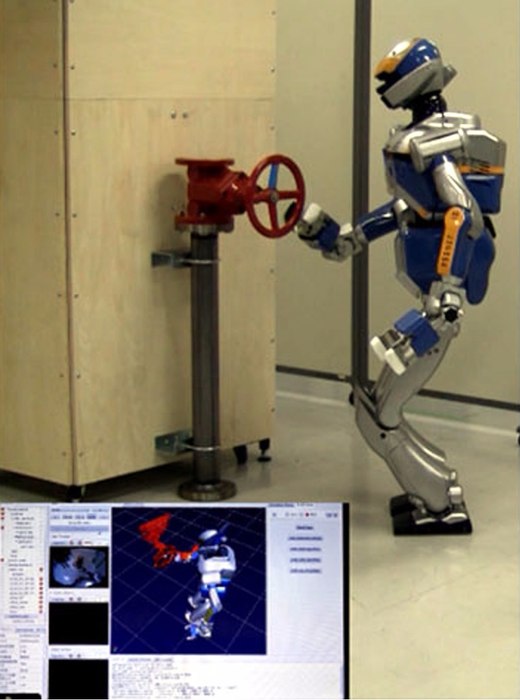By now you may be well aware that robots can build cars by the millions, but currently, they don’t have much to do with assembling airliners, a task that still involves human workers. Now the Joint Robotics Laboratory (JRL) and Airbus Group are embarking on a four-year joint research project to develop humanoid robots that are equipped to work on aircraft assembly lines, set to free workers from hazardous jobs.
Technically, most airliners are built on an assembly line, but the process lacks the economy of scale needed to employ most assembly line techniques, such as robots. This is because airliners are among the most advanced and complicated pieces of engineering, and fewer units are made in an entire production run than a car factory pushes out in a single day. This makes aircraft assembly unsuitable for fixed-base robots or robots with limited mobility, such as ones mounted on wheels or tracks.

Image source: CNRS.
Another reason aircraft assembly isn’t suitable for these kinds of robots is that the interior of an airliner is large and complex, and includes many tight spaces. Because the latter is so common, assembly and maintenance manuals include detailed, illustrated instructions on how to crawl in to reach specific parts of the aircraft, and companies often recruit workers of a particular size to fit into tight places, such as the wings of an aircraft. This doesn’t lend itself the approach of tailoring the job to a robot.
JRL, which is a partnership between the National Institute of Advanced Industrial Science and Technology (AIST, located in Japan) and the French National center for Scientific Research (CNRS), is working to develop robots capable of working alongside human counterparts in a robot-unfriendly environment to free workers who can be better suited handling higher-level tasks.
In order for robots to successfully work alongside humans, they must be capable of moving in confined areas made up of uneven surfaces, without bumping into surrounding objects. They’d then need to be able to handle screwing, torqueing, tightening bolts, cleaning up metal dust, inserting parts correctly, and verifying that the tasks are properly completed.

Image source: CNRS.
And why the humanoid shape? According to JRL, a humanoid shape allows a robot to carry out a larger number of tasks, and is well suited for working on aircraft, which are designed to accommodate human workers. The team is currently developing robots that are able to not just walk, but can also move using their entire bodies, in case they need to crawl into confined spaces on their hands and knees, or climb up ladders or stairs.
To make this a reality, JRL and its partners are writing new algorithms that carry out complex calculations needed in order to navigate the interior of an aircraft under construction, and then modifying the behavior to take into account uncalculated events while carrying out a task.
JRL stated that it’s taking a long view of humanoid robots 10 to 15 years from now by not just anticipating robotic advances, but also expanding the effort to include civil aircraft and helicopters, along with spacecraft.
Advertisement
Learn more about Electronic Products Magazine





